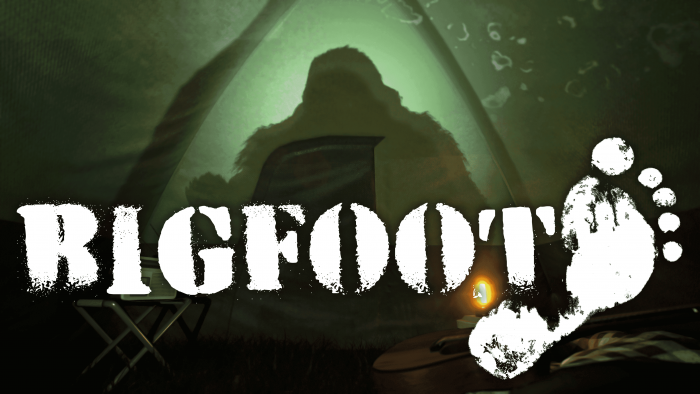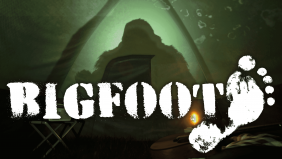This game is all about finding Bigfoot. You have to find the hidden Bigfoot. The player has to search the forest for the hidden Bigfoot. The player is presented with a map with a number of locations marked on it. The player then has to wait for a clue. The clues are usually related to the features of the forest, and will involve the player looking for sounds or signs in order to find the hidden Bigfoot.
Prospector
This game is a strategy-based puzzle game. The player has to find gold in the forest. The player looks for gold and resources to build items and grow their prospector camp. The player has to find the hidden Bigfoot. The player is presented with a map with a number of locations marked on it. The player then has to wait for a clue. The clues are usually related to the features of the forest, and will involve the player looking for sounds or signs in order to find the hidden Bigfoot.
Glimpse
The goal of this game is to help a scientist find conclusive evidence of the existence of Bigfoot. There are many different types of missions to choose from and the player can also explore the different environments.
Twilight Struggle
Twilight Struggle is a board game developed by Jason Matthews and Ananda Gupta and published by GMT Games in 2005. The game simulates the political and military struggles of the Cold War era, pitting the United States and the Soviet Union against one another.
In Twilight Struggle, players take turns as either the US or the USSR, with the goal for the US to defeat the USSR in four steps: Central America, Europe, East Asia, and Moscow. The game can be played by 2 players or up to 4 with 2 teams, with each player either taking the side of the USSR or the US.
The game is lauded for its depth and complexity, with one reviewer describing it as "possibly the most intellectually challenging game on the market."
Dominion
Dominion is a deck-building game created by Donald X. Vaccarino and published by Rio Grande Games in 2008. The game is set in a fictional medieval universe, with players taking on the role of a monarch who will lead his or her kingdom through four eras, gathering treasure and building an imposing dominion.
Players begin the game with a ten card starting deck of basic treasure and action cards, and will draw from their deck to form their hands. A player starts their turn with five cards in hand, with the goal to play one card and draw one more each turn. Cards are played either as treasure to purchase cards from the game's five different types of piles, or as an action to produce an effect, such as drawing additional cards or forcing other players to discard cards.
The game features several themes, including the expansion of the hand size, the addition of VP tokens, and a new card type that provides the player with a bonus effect when drawn.
Munchkin
Munchkin is a card game for 3 to 6 players, published by Steve Jackson Games in 2001. It is a parody of the fantasy role-playing game Dungeons & Dragons and is loosely based on its 3rd edition ruleset.
The game is designed for players aged 10 and up, with each player taking on the role of a fantasy-based character and going on a quest to obtain the most treasure and meet the goal set by the game's level. The player who meets the goal first is the winner.
The game is designed to be played in a non-serious way, with players encouraged to "munchkin" by using their character's abilities to the best of their ability. It is also notable for its lack of player elimination, with all players able to participate in all sessions of the game.
Castles of Burgundy
Castles of Burgundy is a tile-laying game created by Stefan Feld and published in 2011. The game is set in a fictional medieval environment where players take on the role of lords building a castle and managing their estate.
Each player is afforded a unique victory condition, with the game's goal to complete their victory condition while meeting the game's specific objective. The game is played over a series of rounds, with players taking turns in an order determined by a dice roll.
The game features three different resources: gold, wood, and victory points; with the goal to collect as many victory points as possible. This is done by trading resources, or by using special abilities unique to each player.
Hanabi
Hanabi is a cooperative card game for 2 to 5 players, published by Asmodee in 2011. The game is set in a fictional world where fireworks are being set off in celebration, and the players must work together to light all of the fireworks in the correct order.
The game is played over a series of rounds, with players taking turns in an order determined by a dice roll. Each turn, players must play a card from their hand, with the goal to play a card that matches the color or number at the top of one of the cards in play. If the player is able to play their card, they will discard it and then draw a new one from the deck.


-hzvek-rs-wX-225-hX-125.jpg)
 Best Games Similar to Finding Bigfoot
Best Games Similar to Finding Bigfoot
-hzvek-rs-wX-282-hX-259.jpg) Step-by-Step Guide How to Play Finding Bigfoot
Step-by-Step Guide How to Play Finding Bigfoot
